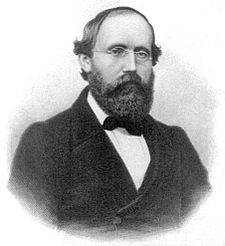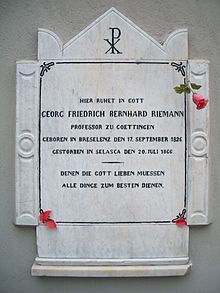As I read this, the total Earth energy imbalance, 2.2 W/m2, is (or was at this time) being offset by -1.6 W/m2, or 73%, of aerosol forcing, leaving only 0.6 W/m2.
Now, if you use the Arrhenius relation for the radiative forcing of CO2, (https://en.wikipedia.org/wiki/Svante_Arrhenius)

which calculates the change in radiative forcing as the constant alpha (generally accepted as 5.35) multiplied by the natural logarithm of the current CO2 concentration (390 ppm in 2012) divided by the pre-industrial (280 ppm) level. Performing this calculation yields 1.8 W/m2. I presume the total of 2.2 W/m2 includes forcings from other sources, such as other greenhouse gases.
We can calculate the temperature rise caused by this forcing by using a variation of the Stephan-Boltzmann law (https://en.wikipedia.org/wiki/Stefan-Boltzmann_law) in which the ratio change of the temperature change is proportional to the 0.25 power of the ratio of the radiative forcing change. In this case, the base radiative forcing is ~390 W/m2, (this includes direct solar forcing plus down-welling radiation from the greenhouse effect). Thus, (392.2/390)^0.25 = 1.0014. Multiplied by 288K (the Earth's surface temperature) yields a temperature increase of but 0.4K (this, incidentally, is less than half the ~1K temperature increase since CO2 levels equaled 280 ppm).
A forcing of only 0.6 W/m2, however, yields a paltry temperature increase of only 0.1K, a mere tiny fraction of the estimated warming over the last 150-200 years -- well within natural fluctuations.
Another part of this NASA report concerns the effect of solar influence on climate (The role of the Sun). There is a well acknowledge correlation between solar magnetic activity (characterized by sunspot levels) and global temperatures, reach back about 1000 years. AGW proponents have tried a number of ways to discredit or explain away this correlation, even though it is too complex to be ignored. One way is to note that changes in solar insolation is simply not strong enough to account for significant temperature changes on Earth. In fact, no one disputes that. Rather, the theory is that changes in solar magnetic activity, by altering the intensity of cosmic rays reaching Earth's atmosphere and affecting cloud cover, accounts for this correlation. Note however, that these are long term changes in sunspot activity, covering many decades, that give rise to the correlation, not the ~11 year cycle of sunspot activity. Yet Hansen et al focus on this short term cycle to "prove" sunspot levels do not effect radiative forcing. Yet no one is claiming that, hence this proof is irrelevant and invalid.
Without further comment, I reproduce below the Science Brief produced by NASA.
Science Briefs
Earth's Energy Imbalance
Original link: https://www.giss.nasa.gov/research/briefs/hansen_16/Deployment of an international array of Argo floats, measuring ocean heat content to a depth of 2000 m, was completed during the past decade, allowing the best assessment so far of Earth's energy imbalance. The observed planetary energy gain during the recent strong solar minimum reveals that the solar forcing of climate, although significant, is overwhelmed by a much larger net human-made climate forcing. The measured imbalance confirms that, if other climate forcings are fixed, atmospheric CO2 must be reduced to about 350 ppm or less to stop global warming. In our recently published paper (Hansen et al., 2011), we also show that climate forcing by human-made aerosols (fine particles in the air) is larger than usually assumed, implying an urgent need for accurate global aerosol measurements to help interpret continuing climate change.

Figure 1.
Contributions to Earth's (positive) energy imbalance in 2005-2010.
Estimates for the deep Southern and Abyssal Oceans are by Purkey and
Johnson (2010) based on sparse observations.
(Credit: NASA/GISS)
Earth's energy imbalance is the difference between the amount of solar energy absorbed by Earth and the amount of energy the planet radiates to space as heat. If the imbalance is positive, more energy coming in than going out, we can expect Earth to become warmer in the future — but cooler if the imbalance is negative. Earth's energy imbalance is thus the single most crucial measure of the status of Earth's climate and it defines expectations for future climate change.
Energy imbalance arises because of changes of the climate forcings acting on the planet in combination with the planet's thermal inertia. For example, if the Sun becomes brighter, that is a positive forcing that will cause warming. If Earth were like Mercury, a body composed of low conductivity material and without oceans, its surface temperature would rise quickly to a level at which the planet was again radiating as much heat energy to space as the absorbed solar energy.
Earth's temperature does not adjust as fast as Mercury's due to the ocean's thermal inertia, which is substantial because the ocean is mixed to considerable depths by winds and convection. Thus it requires centuries for Earth's surface temperature to respond fully to a climate forcing.
Climate forcings are imposed perturbations to Earth's energy balance. Natural forcings include change of the Sun's brightness and volcanic eruptions that deposit aerosols in the stratosphere, thus cooling Earth by reflecting sunlight back to space. Principal human-made climate forcings are greenhouse gases (mainly CO2), which cause warming by trapping Earth's heat radiation, and human-made aerosols, which, like volcanic aerosols, reflect sunlight and have a cooling effect.
Let's consider the effect of a long-lived climate forcing. Say the Sun becomes brighter, staying brighter for a century or longer, or humans increase long-lived greenhouse gases. Either forcing results in more energy coming in than going out. As the planet warms in response to this imbalance, the heat radiated to space by Earth increases. Eventually Earth will reach a global temperature warm enough to radiate to space as much energy as it receives from the Sun, thus stabilizing climate at the new level. At any time during this process the remaining planetary energy imbalance allows us to estimate how much global warming is still "in the pipeline."
Many nations began, about a decade ago, to deploy floats around the world ocean that could "yo-yo" an instrument measuring ocean temperature to a depth of 2 km. By 2006 there were about 3000 floats covering most of the world ocean. These floats allowed von Schuckmann and Le Traon (2011) to estimate that during the 6-year period 2005-2010 the upper 2 km of the world ocean gained energy at a rate 0.41 W/m2 averaged over the planet.
We used other measurements to estimate the energy going into the deeper ocean, into the continents, and into melting of ice worldwide in the period 2005-2010. We found a total Earth energy imbalance of +0.58±0.15 W/m2 divided as shown in Fig. 1.
The role of the Sun. The measured positive imbalance in 2005-2010 is particularly important because it occurred during the deepest solar minimum in the period of accurate solar monitoring (Fig. 2). If the Sun were the only climate forcing or the dominant climate forcing, then the planet would gain energy during the solar maxima, but lose energy during solar minima.

Figure 2.
Solar irradiance in the era of accurate satellite data. Left scale is
the energy passing through an area perpendicular to Sun-Earth line.
Averaged over Earth's surface the absorbed solar energy is ~240 W/m2, so the amplitude of solar variability is a forcing of ~0.25 W/m2.
(Credit: NASA/GISS)
The fact that Earth gained energy at a rate 0.58 W/m2 during a deep prolonged solar minimum reveals that there is a strong positive forcing overwhelming the negative forcing by below-average solar irradiance. That result is not a surprise, given knowledge of other forcings, but it provides unequivocal refutation of assertions that the Sun is the dominant climate forcing.
Target CO2. The measured planetary energy imbalance provides an immediate accurate assessment of how much atmospheric CO2 would need to be reduced to restore Earth's energy balance, which is the basic requirement for stabilizing climate. If other climate forcings were unchanged, increasing Earth's radiation to space by 0.5 W/m2 would require reducing CO2 by ~30 ppm to 360 ppm. However, given that the imbalance of 0.58±0.15 W/m2 was measured during a deep solar minimum, it is probably necessary to increase radiation to space by closer to 0.75 W/m2, which would require reducing CO2 to ~345 ppm, other forcings being unchanged. Thus the Earth's energy imbalance confirms an earlier estimate on other grounds that CO2 must be reduced to about 350 ppm or less to stabilize climate (Hansen et al., 2008).
Aerosols. The measured planetary energy imbalance also allows us to estimate the climate forcing caused by human-made atmospheric aerosols. This is important because the aerosol forcing is believed to be large, but it is practically unmeasured.

Figure 3.
Schematic diagram of human-made climate forcings by greenhouse gases, aerosols, and their net effect.
(Credit: NASA/GISS)
The human-made greenhouse gas (GHG) forcing is known to be about +3 W/m2 (Fig. 3). The net human-made aerosol forcing is negative (cooling), but its magnitude is uncertain within a broad range (Fig. 3). The aerosol forcing is complex because there are several aerosol types, with some aerosols, such as black soot, partially absorbing incident sunlight, thus heating the atmosphere. Also aerosols serve as condensation nuclei for water vapor, thus causing additional aerosol climate forcing by altering cloud properties. As a result, sophisticated global measurements are needed to define the aerosol climate forcing, as discussed below.
The importance of knowing the aerosol forcing is shown by considering the following two cases: (1) aerosol forcing about -1 W/m2, such that the net climate forcing is ~ 2 W/m2, (2) aerosol forcing of -2 W/m2, yielding a net forcing ~1 W/m2. Both cases are possible, because of the uncertainty in the aerosol forcing.
Which alternative is closer to the truth defines the terms of a "Faustian bargain" that humanity has set for itself. Global warming so far has been limited, as aerosol cooling has partially offset greenhouse gas warming. But aerosols remain airborne only several days, so they must be pumped into the air faster and faster to keep pace with increasing long-lived greenhouse gases (much of the CO2 from fossil fuel emissions will remain in the air for several millennia). However, concern about health effects of particulate air pollution is likely to lead to eventual reduction of human-made aerosols. Thereupon humanity's Faustian payment will come due.
If the true net forcing is +2 W/m2 (aerosol forcing -1 W/m2), even a major effort to clean up aerosols, say reduction by half, increases the net forcing only 25% (from 2 W/m2 to 2.5 W/m2). But if the net forcing is +1 W/m2 (aerosol forcing -2 W/m2), reducing aerosols by half doubles the net climate forcing (from 1 W/m2 to 2 W/m2). Given that global climate effects are already observed (IPCC, 2007; Hansen et al., 2012), doubling the climate forcing suggests that humanity may face a grievous Faustian payment.

Figure 4.
Expected Earth energy imbalance for three choices of aerosol climate forcing. Measured imbalance, close to 0.6 W/m2, implies that aerosol forcing is close to -1.6 W/m2.
(Credit: NASA/GISS)
Most climate models contributing to the last assessment by the Intergovernmental Panel on Climate Change (IPCC, 2007) employed aerosol forcings in the range -0.5 to -1.1 W/m2 and achieved good agreement with observed global warming over the past century, suggesting that the aerosol forcing is only moderate. However, there is an ambiguity in the climate models. Most of the models used in IPCC (2007) mix heat efficiently into the intermediate and deep ocean, resulting in the need for a large climate forcing (~2 W/m2) to warm Earth's surface by the observed 0.8°C over the past century. But if the ocean mixes heat into the deeper ocean less efficiently, the net climate forcing needed to match observed global warming is smaller.
Earth's energy imbalance, if measured accurately, provides one way to resolve this ambiguity. The case with rapid ocean mixing and small aerosol forcing requires a large planetary energy imbalance to yield the observed surface warming. The planetary energy imbalance required to yield the observed warming for different choices of aerosol optical depth is shown in Fig. 4, based on a simplified representation of global climate simulations (Hansen et al., 2011).
Measured Earth energy imbalance, +0.58 W/m2 during 2005-2010, implies that the aerosol forcing is about -1.6 W/m2, a greater negative forcing than employed in most IPCC models. We discuss multiple lines of evidence that most climate models employed in these earlier studies had moderately excessive ocean mixing, which could account for the fact that they achieved a good fit to observed global temperature change with a smaller aerosol forcing.
The large (negative) aerosol climate forcing makes it imperative that we achieve a better understanding of the aerosols that cause this forcing. Unfortunately, the first satellite capable of measuring detailed aerosol physical properties, the Glory mission (Mishchenko et al., 2007), suffered a launch failure. It is urgent that a replacement mission be carried out, as the present net effect of changing emissions in developing and developed countries is highly uncertain
Global measurements to assess the aerosol indirect climate forcing, via aerosol effects on clouds, require simultaneous high precision polarimetric measurements of reflected solar radiation and interferometric measurements of emitted heat radiation with the two instruments looking at the same area at the same time. Such a mission concept has been defined (Hansen et al., 1993) and recent reassessments indicate that it could be achieved at a cost of about $100M if carried out by the private sector without a requirement for undue government review panels.






















